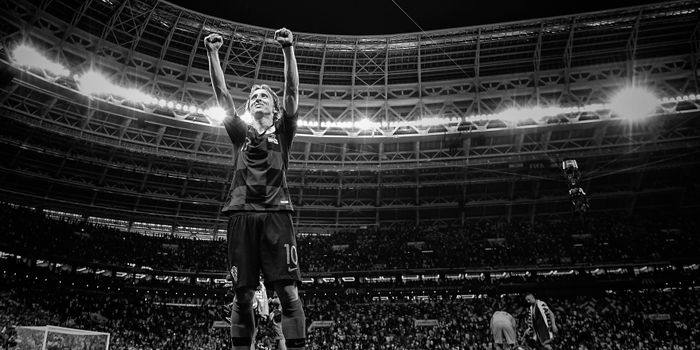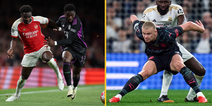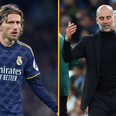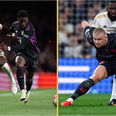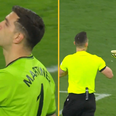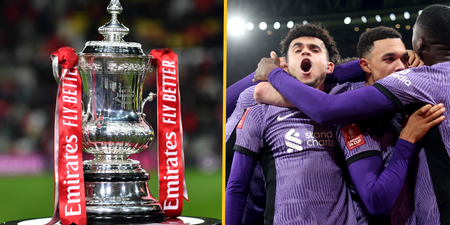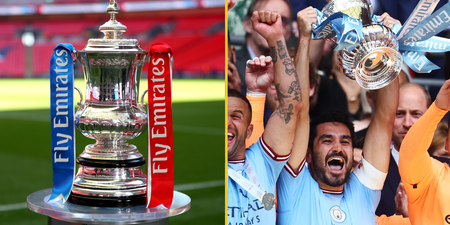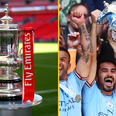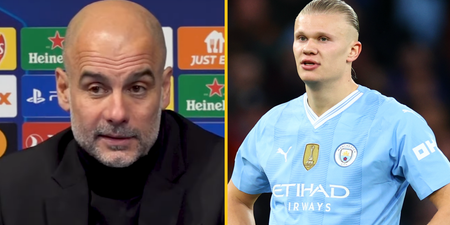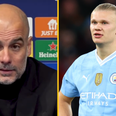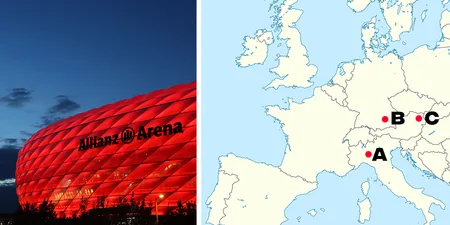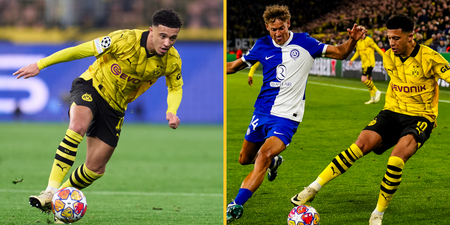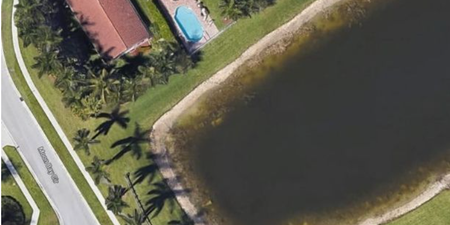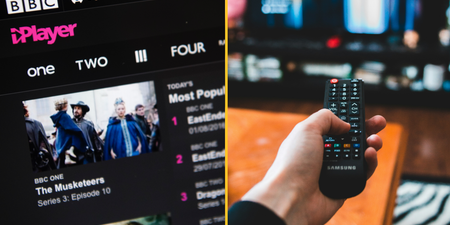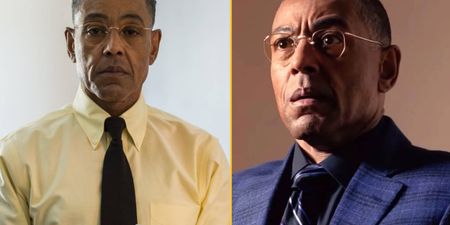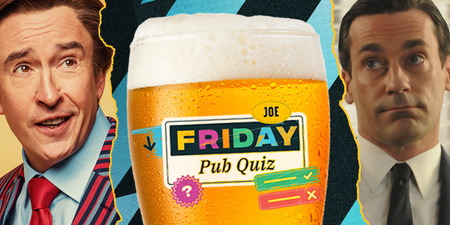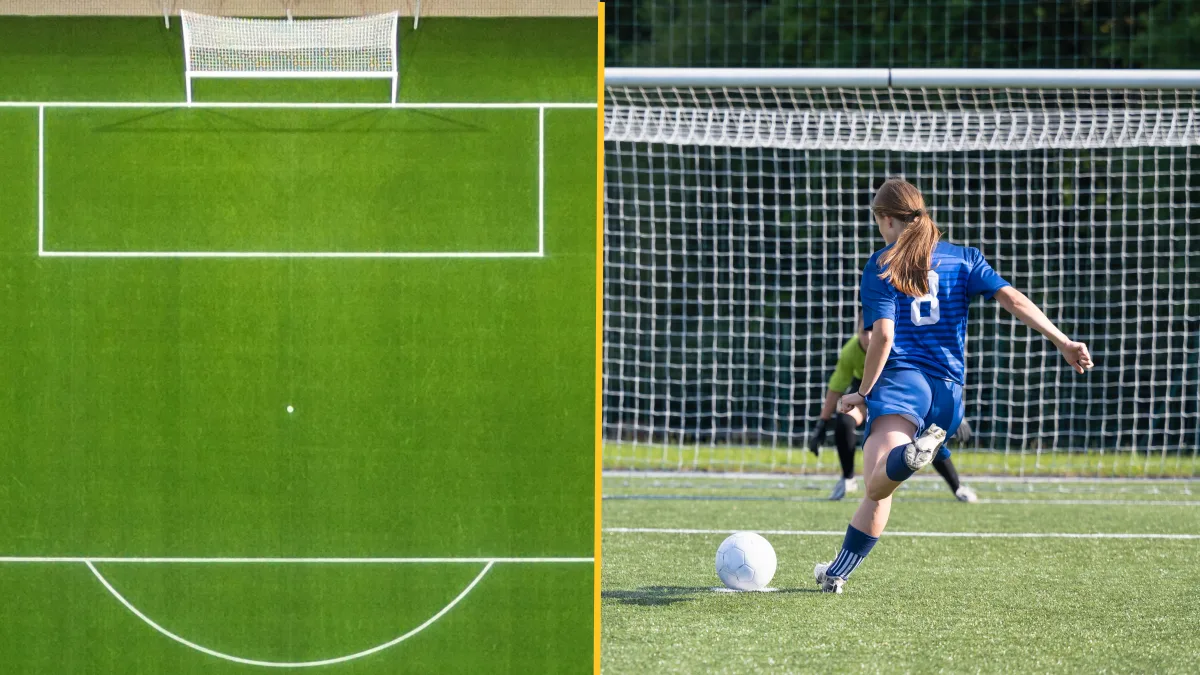11.02pm, May 26 2018. Olimpiyskiy National Sports Complex, Kiev. Real Madrid 1-1 Liverpool
There’s a little under half an hour to go in the Champions League Final. The holders Real Madrid need to get on the ball, re-assert their dominance, put the game away.
Liverpool’s travelling support is louder than it’s been at any point during the game. They can sense a sixth European Cup.
The time is now. Tick tock, tick tock. Suddenly, a Raphael Varane header falls at the feet of Luka Modric on the edge of the D of the centre circle. The Croat, facing his own goal, deftly cushion-volleys it with the touch of a Grand Slam tennis champion, to Marcelo.
Exactly sixty seconds later, Gareth Bale’s spectacular overhead kick will make it 2-1. Game over. In that time, nobody will touch the ball more than the Los Blancos number ten. He completes six passes, takes thirteen touches and runs one hundred and six yards. Few will remember his role in the goal but he’s the fulcrum of the move.
If touches were words, he’d be an iambic pentameter. Jurgen Klopp’s midfield fail to get close to him all night and although the Welshman takes the plaudits for Real’s third Champions League title in four seasons, it is Modric who quietly dominates proceedings.
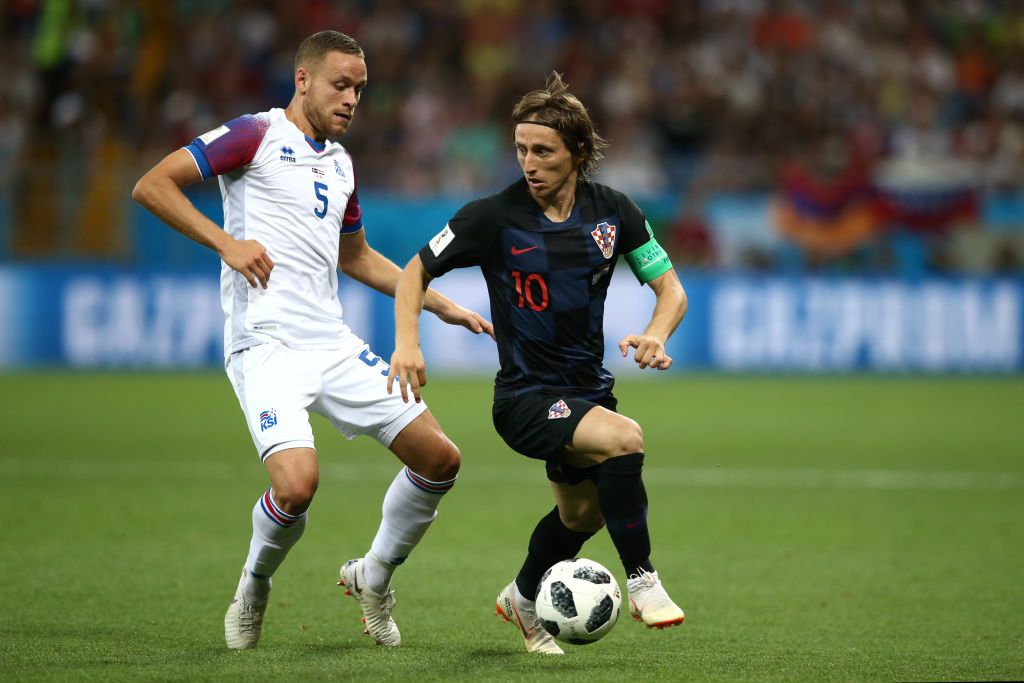
Forty-six days later he’s at it again. This time he’s substituted club for country. The Croatia side he carries trail England by a goal to nil in the World Cup semi-final in Moscow. For 45 minutes he struggles to match the pace of his opponents, unable to assert his grip upon the shoulder of the game.
But after half-time there is the familiar refrain: the gentle, metronomic way in which he manipulates play from side to side, daring defenders to break their lines before sliding a pass into the open gap to break their hearts. He scurries here, he hustles there, pass, move, move, pass. He is a giant presence.
Once again the headline writers cite others – this time Mandzukic and Perisic – as the saviours of the hour. But the real salvation is delivered by a 32-year-old who’s become arguably the best footballer in the world.
And the destroyer of English dreams.
Modric’s path to greatness has been a difficult one, a confused one. That he’s even playing the game is a minor miracle given the horrors of his youth.
Born in the small hamlet of Modrica on the barren slopes of Croatia’s largest mountain range, he was raised during the worst of the Balkan Conflict that resulted in the deaths of more than 130,000 people.
As Croatia declared its independence in June 1991, local Serbs captured the area with the help of the Yugoslav army. When the JNA surrounded the village, his grandfather, who’d been out herding cattle was spotted and executed.
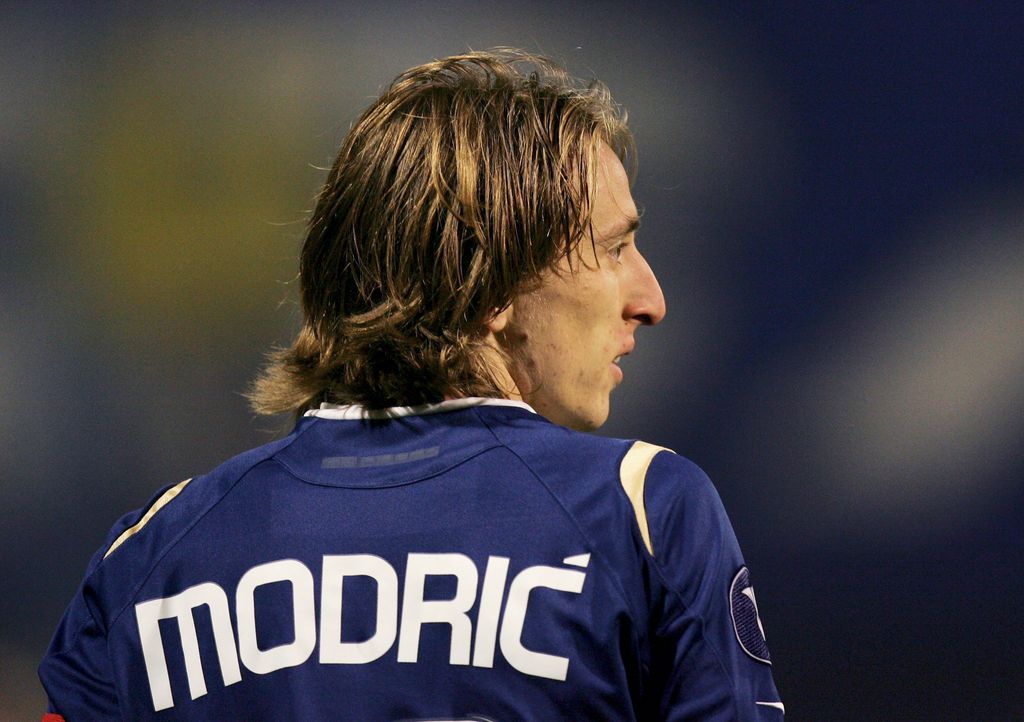
Five-year-old Luka and his family escaped down the old roads laid by that same grandfather many years before, to the relative safety of a hotel in the town of Zadar. As the horror of war unfolded around them, the bombs and the bullets, the executions and the death squads, they were now refugees.
He would kick a battered old ball around the hotel car park for hours on end whilst his father worked as a mechanic for the Croatian Army. For seven years they lived in that hotel, struggling to make ends meet. And to stay alive.
“It was a really tough time,” Modric told reporters. “I remember them vividly but it’s not something you want to think about. My father didn’t even have money to buy me shinpads.
Modric found solitude with that ball. And he discovered how to play a version of street football that has remained with him throughout his career.
A game of angles and bounces, of guile and surprise, toughness and touch. While the war made him stronger, the car park and what lay within it made him a star.
At 8 years old, he had a trial with fifteen-time champions Hadjuk Split, the team he adored. He was there for two weeks before being released, told he was too fragile. Disconsolate, he returned to Zadar and entered the local academy, under the watchful eye of its head, Tomislav Básic.
“He was a scared kid,” says Básic. “But I quickly noticed that the ball was beautiful when it was at his feet. Luka was small and weak and we were constantly talking about whether he would grow or not. But you can never trust to say who will be a big player. What God has given him is in the genes.”
Básic, who would become a second father to Modric, nurtured the young boy under the belief that his natural ability, combined with his brain would trump any physical shortcomings.
The story goes that he even made the youngster a pair of shinpads out of wood. Básic, who passed away in 2014, believed wholeheartedly that the misery and hardship of Modric’s childhood was one of the key reasons behind his protoge’s success.
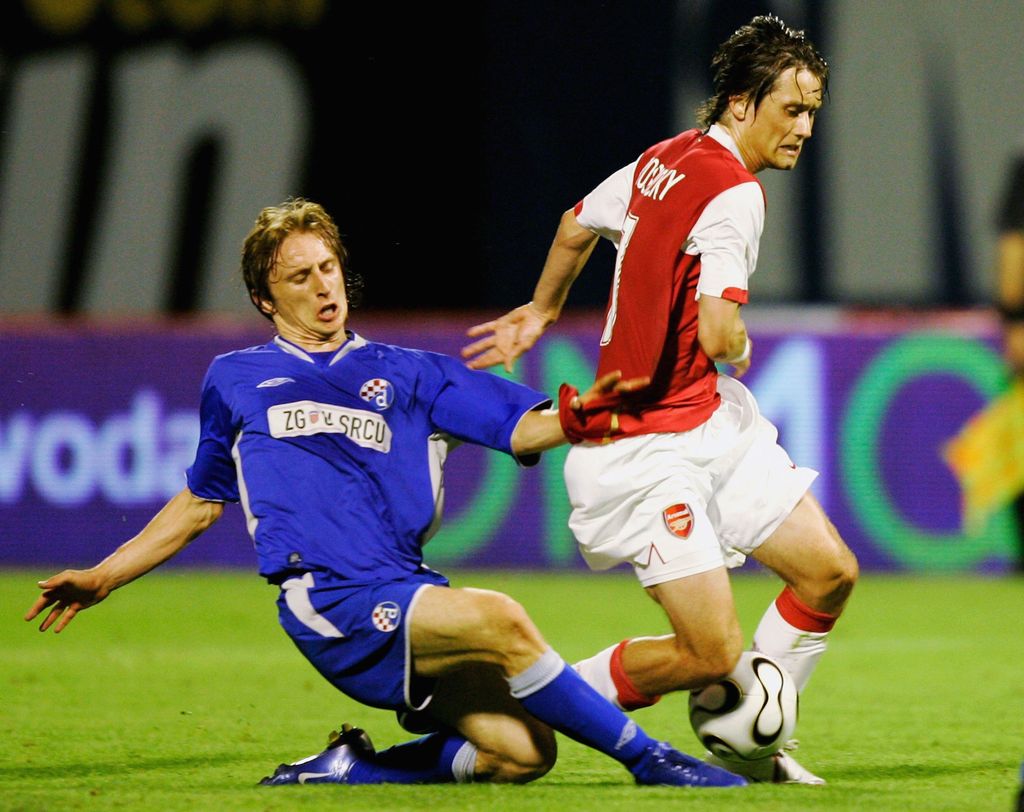
“Perhaps it was the revoltion inside of him because of what he went through and his desire to succeed. I don’t know if it has encouraged him, but I’m convinced that it had a major significance in the development of him as a man, mental and physical.”
It was Básic who arranged Modric’s move to Dinamo Zagreb when he was just 15. But much like his time with Hadjuk Split, it was shortlived.
He was sent out on loan, first to Zrinjski in Bosnia, then, along with Vedran Corluka, to Inter Zapresic in the suburbs of Zagreb.
It was there beneath the shadows of the old ceramics factory that he began to shine, quickly becoming a hero to the clubs’ supporters, known as the ‘Divlje Svinje’ or Wild Pigs and driving the Keramičari to within a whisker of their first ever League title.
“He was technically perfect,” wrote leading Croatian football writer Alexsander Holiga. “Even the hard pitches in the Bosnian league didn’t bother him. He became a leader and its rare to have an 18-year-old leader in the team. He became much tougher in the Bosnian league, perhaps the toughest, most physical league of them all.”
Keen to keep him from the clutches of a number of interested suitors, Zagreb and their controversial owner Zdrakvo Mamic signed Modric to a ten-year contract. But he would only play four of those before leaving for London, quickly outgrowing Croatian football.
Barcelona and Chelsea were seen as possible landing spots, but both were put off by his size. Instead, according to journalist Pete Jensen, it was Tottenham who signed him, albeit serendipitously.

“Spurs scout Eddie Presland flew to Zagreb in 2007 to watch this promising Brazilian-born striker called Eduardo,” said Jensen. “But when he arrived he was told that Arsenal had beaten him to it. Anyway, Eddie stayed watching and was instead drawn to this scrawny young kid playing in the heart of Dinamo’s midfield — Luka Modric.”
Presland would return again and again to Stadion Maksimir to watch Modric before Tottenham chairman Daniel Levy flew to sign him in the summer of 2008 for £16.5 million pounds.
The move was the making of the Croat despite some growing pains with incumbent boss Juande Ramos. However it was under the tutelage of Harry Redknapp that he developed into one of Europe’s finest playmakers, quickly getting to grips with the ambitious style of play and fatherly man-management.
“He was an amazing player to manage, just a fantastic footballer,” Redknapp tells me. “I didn’t have a single second’s problem with the lad. Not one.
“He always wanted the ball and he had that innate awareness that all the great midfielders have: When you’re in the middle of the park it’s a very different game to any other position. If you’re a full-back or a centre half or a winger then the game is either inside you or in front of you,” Redknapp says.
“But in the middle it’s all around. You have to know where everyone is, have to have your head on a swivel all the time. Your body has to be side on to receive a pass and your brain has to be one step ahead of everyone else’s because the picture’s always changing.”
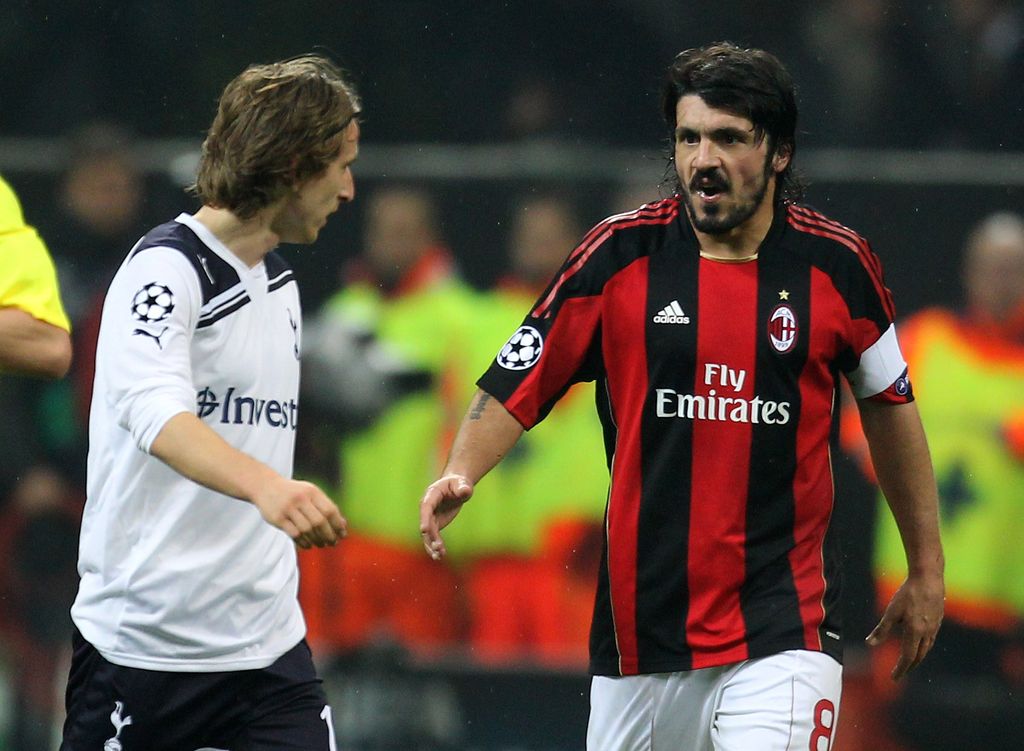
After four seasons at White Hart Lane, the Croatian had again outgrown his surroundings. Despite recurring interest from Chelsea, he chose the Bernabeu over the Bridge, and although, much like his early days at Spurs, he would struggle – he was voted 2012’s worst La Liga signing – he finally settled in alongside Xabi Alonso to form one of the best midfield partnerships on the continent.
In the space of three days in the spring of 2013 he supplied the cross for Sergio Ramos’s winner in the Clasico, then came off the bench to fire Madrid past Manchester United and into the quarter-finals of the Champions League. Suddenly nobody was talking about his lack of height or his strength in the tackle.
Nurtured by Carlo Ancelotti who, like Harry Redknapp before him, unlocked his rare vision and footballing acuity, Modric flourished. Although he would play second fiddle in narrative to Xavi and Iniesta, the Croat was comfortably their equal.
Now he stands atop the peak of world football, elegant yet urgent, gentle yet forceful, always appearing at just the right time to nurture the play, change direction, increase tempo. His mind two moves ahead of everyone else.
Horologists may study time. He slows it down.
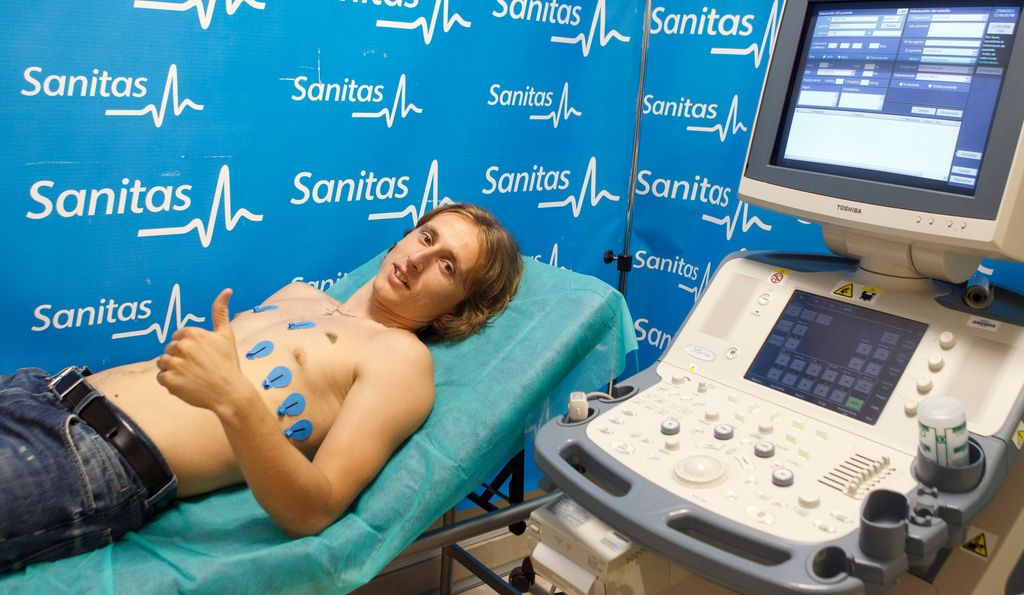
“He just has such a rare understanding for how to play the position. He creates space in his head,” says Redknapp. “When he came to me he was always playing wide on the left, tucking in and playing in little pockets of space. Then we played Arsenal and Chelsea in the same week and I decided to put him centrally. Some of my own coaches thought that was a mistake because they didn’t think he’d be strong enough, but he ran those games. Absolutely dominated them. He never played wide left again.”
“So what convinced you to break the narrative around putting a smaller player in the hustle and bustle of central midfield?” I ask.
“Look back through history to Leeds United,” he says. “They had two them in Giles and Bremner who were 5’5 and it didn’t hurt them. You don’t have to be a giant. But you do have to have the ability to see everything before it happens. He just knits the game together. I don’t ever remember him giving the ball away in training. Ever. We don’t have a player like that in our country. We don’t. And that’s holding us back.”
When Gareth Southgate reflects on England’s departure from the World Cup, when his analytics team watch the film of their capitulation after half-time in that Moscow semi-final, they’ll see the big contribution from the little man.
For the second time in seven weeks, the excellent Jordan Henderson couldn’t get to grips with Modric as he darted and probed, tracking back and driving forwards, always moving, finding space.
When they look at the numbers, they’ll also see that no Croatian scored more goals at the World Cup than the Madrid man. Or played more passes, more key passes. And no single player who played at Russia 2018 covered more ground than him.
This matchless distributor, this archetypal team player built tough by war, has never been afraid to put in a shift.
Around St. George’s Park and in the corridors of the Football Association they ask themselves not whether England produces enough good players – it patently does. But why it’s struggling to produce midfielders of the calibre of Modric, a player who surely would have carried Southgate’s men to World Cup glory had he been born in Darlington and not Dalmatia.
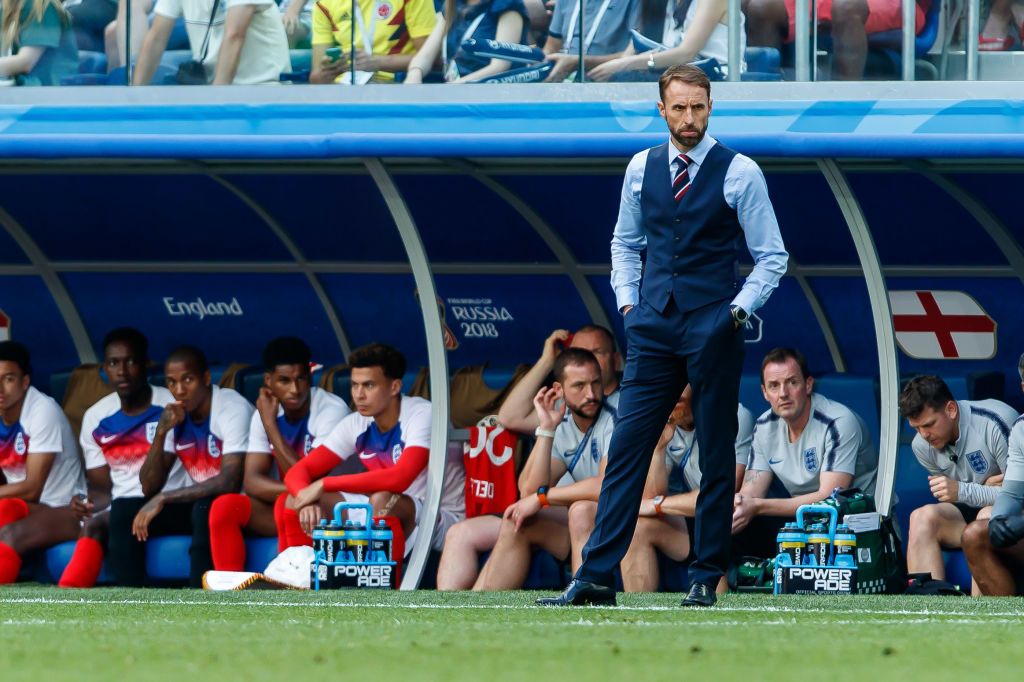
It’s easy to play ‘point the finger’ in these instances and it seems churlish to do so given how well England performed this summer.
But for a national team that suddenly finds itself with so many strengths, its greatest weakness is, as Redknapp asserts, what hinders it most: the consistent inability to retain possession at critical junctures of big games and the tendency to sit deeper and deeper as pressure mounts.
So who or what is to blame? The sanitised academy system? The inability of big clubs to trust young players who quarterback games in the middle of the park? Or is it perhaps a cultural shortcoming? Or all of the above?
“The traditional way of English football hasn’t needed players like Luka Modric,” says the New York Times’ Chief Soccer Correspondent Rory Smith from a cafe in Moscow.
“For a long, long time we’ve needed players who run up and down and tackle and shoot and give the ball to wingers. There’s been a cultural deficit. Look at the English midfielders we revere in this country: Gerrard, Lampard and Scholes. The first two were always more highly prized than Scholes yet he was the best of the three in terms of cleverness and skill.
“We love heart on sleeve fist pumpers, not the subtlety of a guy like Modric. That’s partly to do with the speed of the game. Everything is 100 miles an hour in England. In most other countries where the emphasis is on slow build up, you get far more players like him.”
Roy Keane may not be chiselled from quite the same creative granite as Modric, but few players in the modern era understand how to play the position as well as he did and he agrees with the assertion that English football is desperately lacking the sort of central midfielder that might elevate it into a major championship final.
“There’s times when England are under the cosh where they just have to keep the ball better,” he told ITV. “They lack the composure at key times in games to put their foot on it, not panic and slow everything down. The gap in quality in midfield between England and say Belgium means there’s still a very long way to go. But it’s not just England. A lot of countries lack that Modric type. If you can find him, it changes everything.”
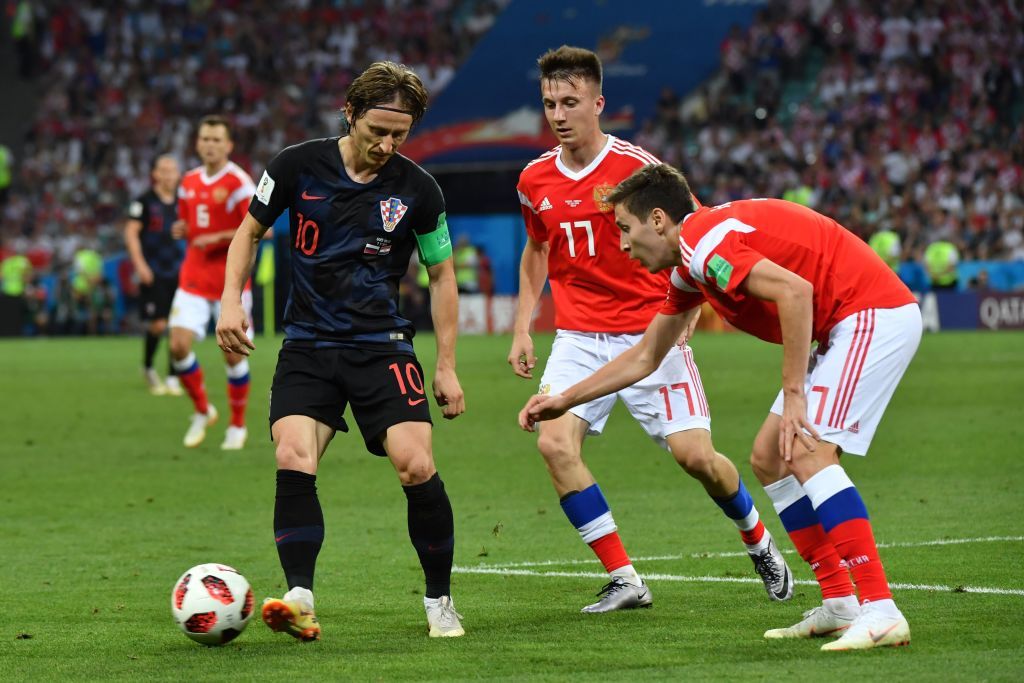
Easier said than done.
So what of the academy revolution in this country? Is it ready to start churning out a Modric or two? And are we finally after years of trying, culturally ready for it? “I think we’ve actually gone too far the other way,” says Rory Smith.
“We’ve now made youth development into such a science that it’s going to be difficult to claw it back. Look, if you’re a kid and you’ve spent all your time from the age of seven playing in an academy with perfect facilities and great coaches, the type of game you’re raised into is very pattern oriented.
“It’s of a high standard, wonderful technique, but there’s the element that great players possess that can’t be taught to you in those sorts of pristine surroundings. Now it could be that (Manchester City’s) Phil Foden becomes that guy. He’s certainly the one they envision taking on that mantle. But the way we’ve made youth development such a science, it’s now too sterile.
“Take a medical analogy: Kids who are protected from dirt and mess have weaker immune systems because you need exposure to that stuff to build up antibodies. Football is exactly the same. If you’re brought up being constantly told what to do, you don’t learn the ability that makes these players special. It’s the same in France.
“Clarefontaine, for all it’s plusses it isn’t the only reason why French football is such a success. Over there they grow up playing multi-age group, multi-size, multi-ethnic street football that’s far more challenging than any academy.”
“But why?” I ask.
“Because they’re constantly problem solving.”
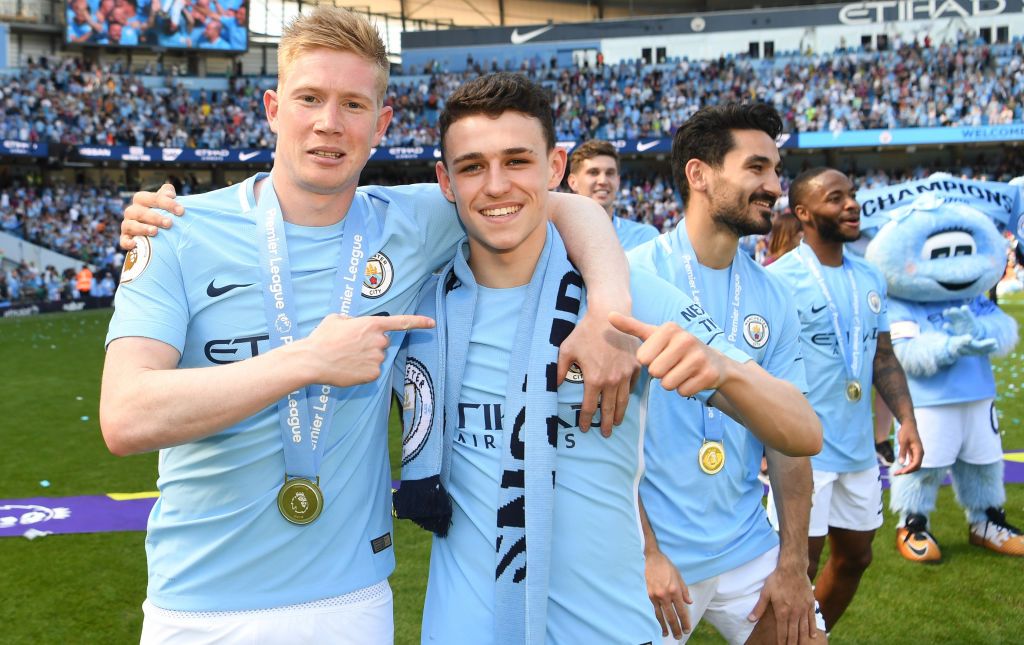
But problem solving only gets you so far in modern football. How can you piece together the puzzle if you don’t have a jigsaw to play with in the first place? Those around the English game know the talent is there, it’s just not getting the opportunities it needs to shine.
And the evidence would support that: Foden has played just 45 minutes for Manchester City in the Premier League, whilst Ruben Loftus-Cheek played more top-flight games on loan at Crystal Palace last season than he has done during his entire career at Chelsea.
A stat made all the more remarkable when you consider that he signed for the club in 2004 and started three games for England in Russia.
“He has everything in his game to go right to the very top,” said Frank Lampard to the BBC during the World Cup. “He’s on his way there now, and with the ability he’s got, he can dominate games from start to finish.”
But for who?
Like Loftus-Cheek, Nathanial Chalobah – long earmarked by those inside St Georges Park as a future England midfielder – had almost as many loans (six) as senior games for Chelsea before signing for Watford last summer.
Others, like Aston Villa’s Jack Grealish and Bournemouth’s Lewis Cook will get more opportunities than most, although Grealish may have to move to the top flight if he’s to merit serious consideration for Euro 2020.

Then there’s highly rated youngsters Angel Gomes of Manchester United and Curtis Jones at Liverpool who may see their development stymied by the likes of Paul Pogba, Naby Keita, Fabinho and Fred.
Chelsea’s Mason Mount signed for the Blues aged six but has yet to feature in the first team. The 19-year-old spent last season on loan at Vitesse Arnhem and looks set to play for Frank Lampard’s Derby side in 2018/19.
“The problem for me is two-fold,” says Harry Redknapp. “I don’t believe it when people say we can’t develop players like Luka. They’re already here. They just need a manager to have the courage to start playing them or they won’t go anyhere. And secondly, how many famous Premier League managers go and watch the youth teams play?
“I hear the stories and it’s not many. How many of them truly know what they have at their clubs? We have so many talented kids who get to 18 or 19 and don’t train on because they’re not considered as valuable as a lad who you can spend £20, £30 million on from La Liga or Serie A who probably isn’t any better than these kids anyway!
“You have to stick them in and give them a chance. I played Frank (Lampard) and Rio (Ferdinand) and (Michael) Carrick and Joe Cole at 17 and now Pep Guardiola has to do the same with the boy Foden. If he’s as good as everyone says he is then he has to play.”

But Guardiola’s responsibilities lie solely with Manchester City. And why wouldn’t they? When you ask him about safeguarding the future of young English talent under his wing, he smiles, gives you a soundbite about the importance of nurturing young talent and then picks the team he wants to play.
Whether Phil Foden will be a part of that this season is anyone’s guess.
“The risk with Foden and to a lesser degree, Gomes, Jones and Mount is that they won’t get the chance to shine because the manager wants to win games with more experienced players,” says Rory Smith.
“This current England team isn’t a St Georges Park team and what I mean by that is that they’ve not been earmarked from an early age by the people there. If football was linear then players like Jadon Sancho, Rhian Brewster, Foden, et cetera would be huge stars and England would have solved the 18-22 problem.
“But they’re not and until they do, all the work at St Georges Park will be irrelevent because you’re wasting talent. It’s misuse. I thought that this World Cup would make English players trendy again, but then on the day of the semi-final against Croatia, Manchester City sign Riyadh Mahrez.”
“You don’t like that signing?” I ask Smith.
“Look, I get that he improves that squad but he’s not a vast amount better than what they have already and now he’s just a body stopping Foden coming through. If you’re Guardiola and you have the choice of putting Mahrez or Foden on, you’re going to put Mahrez on every time. And that’s the nub.”
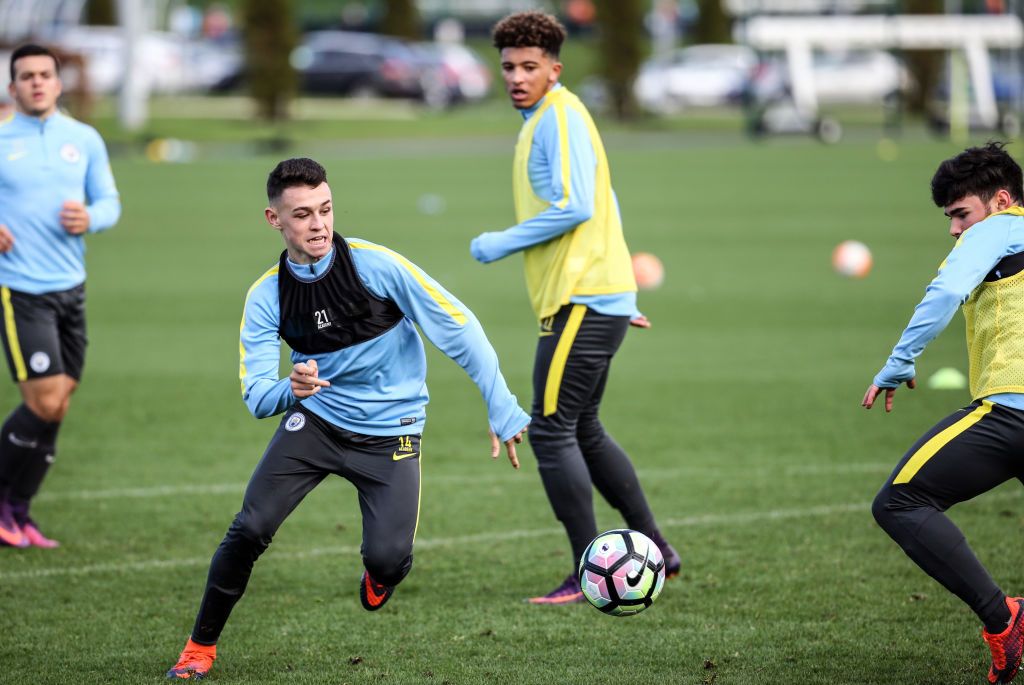
That’s as maybe, but young players not getting the chance to play and Premier League sides stymieing the progression of the national team is a well-worn argument.
After all, if you’re taking over at Chelsea – who’ve had 17 managers in 18 years – then you know what you’re letting yourself in for: Ergo, rent don’t buy.
Why would you eschew the chance to sign big money players to rely on young, home grown talent if the expectation from within the club is that it’s far better to spend £97 million on the likes of Tiemoue Bakayoko and Jorginho than to allow Loftus-Cheek or Mount to emerge?
Answer: you wouldn’t. And that’s where the rubber meets the road because experience in this game is King.
“English midfielders aren’t composed in their minds when they have the chance to slow things down,” said Gary Neville during the World Cup. “But it’s purely a maturity thing. When they get that experience they’ll handle it better.”
Neville is right: experience matters.
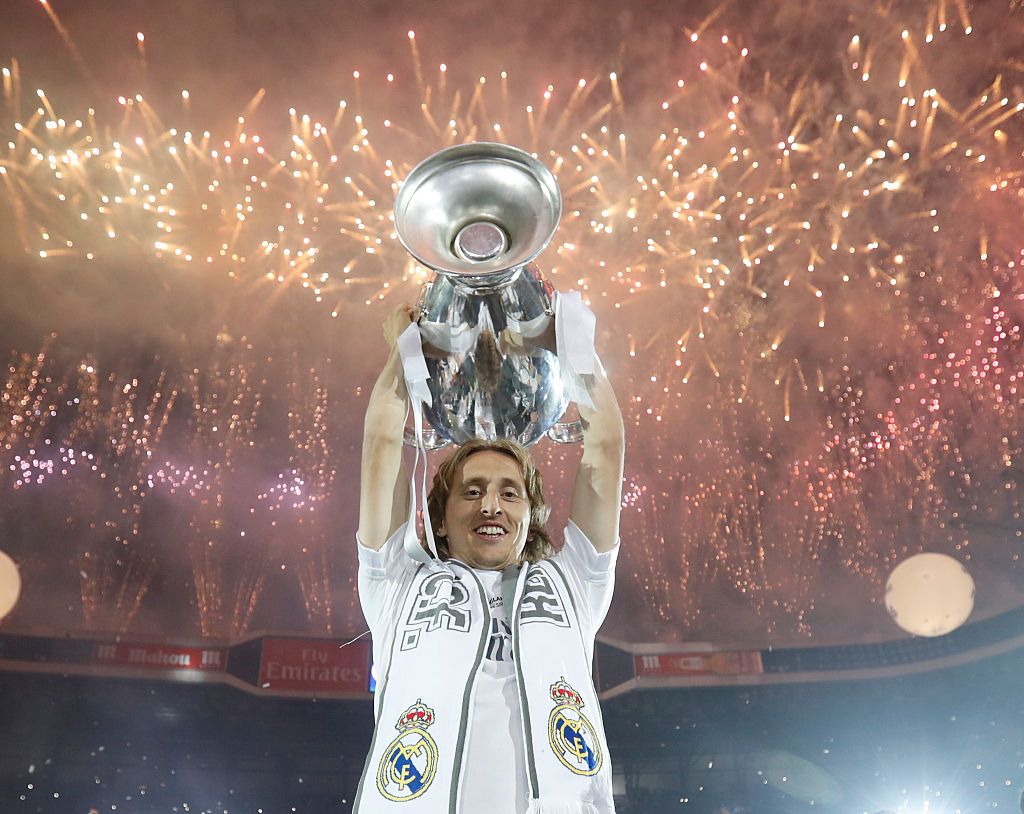
Look at the Croatia starting eleven that got to the World Cup Final: Modric has played in four Champions League Finals, Lovren, Mandzukic and Rakitic have all played in one each and Vida, Brozovic, Perisic, Vrsaljko and Subasic have all featured consistently in huge games domestically and in Europe.
England’s Champions League final participants from that team that started the semi-final? One. Jordan Henderson. And that only happened in May.
“You need to expose players where the air is thin,” says Smith. “It’s not parochial to think of English players as very talented. We’re closer with the national team than we’ve been in the recent past and the direction of travel is good, but there’s still a number of small flaws and experience is the key one.
“And this is not a criticism of the FA, it’s just a fact. Until we can get these guys playing first team football in the short term, and in the long term combine the academy football with the street football mentality then we simply won’t produce the types of players this country is crying out for.”
So are the Premier League clubs at least cognisant of the need to adapt the way they teach youngsters in this country if – as Smith asserts – they’re to truly develop the kind of player that could change the face of the England team?
At least two teams from the top flight have incorporated ‘street football’ environments into their academies with more planned. That, according to Harry Redknapp, could be a game changer.
“These little games in tight spaces, balls bouncing off angles, a mix of big and little lads, that’s what will change the game. You’ll get a generation of kids who won’t need to play long channel balls to nobody in particular. And they’ll become midfielders who can see the bigger picture, who’ll break you down by passing quickly through the lines and who won’t give away possession because they’re not playing with fear.”

The biggest fear of all for English football is the potential waste of a core of youngsters which has won multiple tournaments at under 17, 19 and 20 levels.
“I wouldn’t be surpised in 2022 when this current academy generation comes through, if we’re still asking this question and still wondering why we don’t have a Luka Modric or a Xavi or an Iniesta or an Andrea Pirlo running England’s midfield,” says Rory Smith.
“If we’re not careful then this generation of talent will have been passed by because we’re too industrial. We’ve removed random chance. Academies don’t play risky passes. They keep the ball well and that’s certainly what we need to do more of. But there has to be a combination of the two.
“That’s why Modric is so good. And that’s what we lack. We can’t let these kids fall through the cracks. Maybe it won’t come from the academies and that’s not a bad thing. Take a walk around South London because the environment exists there to produce that sort of player we crave. If England develop a Luka Modric it’ll come via the streets of South London.”
Although Croatia lost the World Cup Final, Modric was pivotal in keeping his country in the game.
He won the midfield battle against N’Golo Kante, creating a pair of scoring chances and completing almost 91% of his passes.
His role in Ivan Perisic’s goal, much like in Kiev some 50 days earlier, is easily forgotten because of the quality of the finish, yet it was integral to the move. Always the master of subtlety, like a burglar who never leaves a trace.
Modric may be slight – he still looks, as Barney Ronay once wrote in The Guardian – ‘like a small boy dressed as a witch’, yet the spell he cast over English football this summer will live long in the memory.
Only when the national side finds its own wizard will those memories finally fade.
